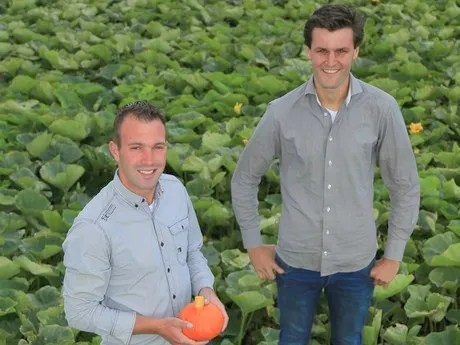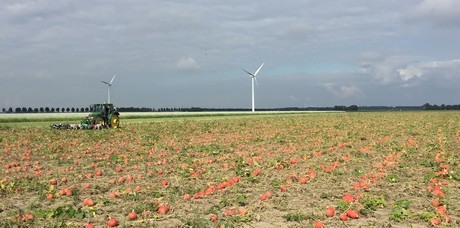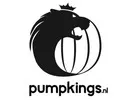This year, pumpkins seemed to have benefited from people's rising demand for healthier products. That makes it a true 'corona-proof' item. So says Thijs de Jong, who co-owns the Dutch company, Pumpkings, with Bastiaan Blok.

Eight years ago, Thijs and Bastiaan started farming on a 2,000m2 plot. Back then, using pumpkins as a vegetable was not done nearly as often as now. "When we started, I also thought you could only use it to make soup," says Thijs. "But in recent years the pumpkin has become standard in many people's diets."
"It's very versatile. It's a good meat substitute and fits in with the health trend. The coronavirus pandemic boosted that this year. So, we've now expanded to 40 hectares of pumpkins. Ninety-five percent of them are Hokkaido, which sell themselves. The remainder is Kabocha pumpkins."
“Due to circumstances, we sold less to the foodservice sector this year. But, we earned double that from sales to retail and wholesale. We just had a minor experiment fail because the hospitality industry closed. Last year, for the first time, we'd sown the Crown Prince," explains Thijs. "This is a grey pumpkin with orange flesh. It's a typical hospitality product that you can't easily sell to supermarkets. After all, shoppers have to know what they can use it for. People don't readily buy grey pumpkins."

“Yields are, however, lower this year. Spring was dry, with very low humidity. That delayed our pumpkins' growth. That didn't improve as the year progressed. We, therefore, have a 20% smaller crop. But that, in turn, means a higher price per pumpkin. This year, the quality is excellent too," says De Jong.
After being harvested, the pumpkins are stored in crates in refrigerated warehouses. They're then washed, sorted, and packaged. "We sell pumpkins from September to March. After that, we focus on the new season. We deliberately chose to focus on that process entirely. Not on year-round delivery. Our clients also appreciate this."
"We not only deliver pumpkins to the Dutch market. They also go to Scandinavia, Germany, and Great Britain." Things could be very different there next year. However, Thijs isn't too worried. "I'm sure our pumpkins will continue to find their way to the UK. They can endure a bit of delay at the border. They're, after all, less perishable than, say, flowers and plants," Thijs concludes.
For more information: Thijs de Jong
Thijs de Jong
Pumpkings
25 Tarpanweg
8255 RT, Swifterbant, NL
Tel: +31 (0) 630 698 547
Email: info@pumpkings.nl
Website: www.pumpkings.nl
